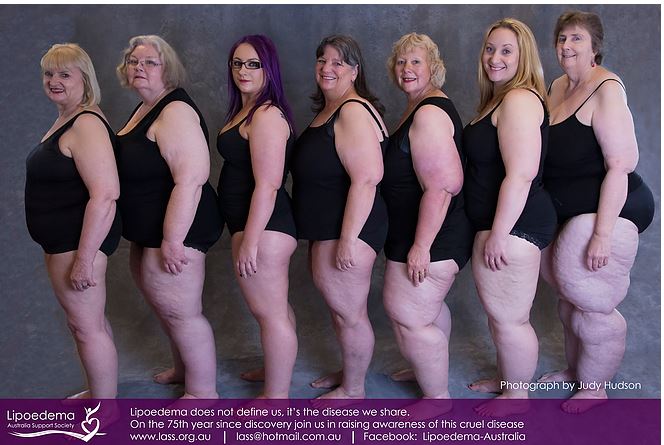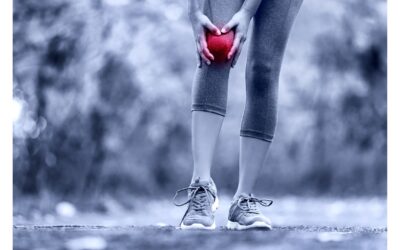Written by Jessie Anderson, Cryotherapy & Sports Therapist at Cryojuvenate
What is Lipoedema?
Lipoedema (spelt Lipedema in the US) is an abnormal build-up of fat on both sides of the lower body, usually effecting the legs, including buttocks, thighs and lower legs. Research has shown that around 1 in 72,000 people are effected, which equates to roughly 11% of women and people assigned female at birth. The condition is almost exclusive to females, showing extremely rare reports amongst the male population. This symmetrical build-up of adipose tissue can cause debilitating and life changing symptoms including pain, swelling, easy bruising, fatigue, and more.
What causes Lipoedema?
Causes of Lipoedema are not well understood, making proper diagnosis very difficult to achieve. It has been recognised that the symptoms of Lipoedema start or worsen during puberty or other extreme hormonal changes such as pregnancy and menopause. Furthermore, research is underway to determine the biological role of hormones, genetics, inflammation, and metabolism in the onset of Lipoedema.
Is It Lipoedema or Something Else?
Some common misdiagnoses include Lymphedema, Decrum’s disease, and chronic venous insufficiency. Although they are easily confused, Lipoedema and Lymphedema are two differing conditions. Lymphedema generally only effects one side of the body and presents more commonly in the hands and feet. Currently, there are no definitive diagnostic tests for this condition. Few physicians are actually comfortable diagnosing and treating Lipoedema due to the lack of diagnostic testing and research based treatments, meaning there is a huge demand for more extensive research into this condition.
Quality of Life with Lipoedema
Suffering with Lipoedema can have huge impacts of a person’s quality of life, especially when the condition progresses to later stages. Pain symptoms and fatigue can prevent someone from their everyday activities and even result in immobility. The condition can also have very serious repercussions on the suffers mental health. Symptoms can lead to low self-esteem and feelings of hopelessness, which can lead to eating disorders which can be life threatening.

Image source: Medi Rent Australia. Image credit: Lipoedema Australia Support Society. Photographer: Judy Hudson
Treating Lipoedema
As mentioned, treatment modalities for Lipoedema are not well understood. Clinicians will advise people to improve lymphatic flow, reduce inflammation, manage pain, and get emotional support. The fat build-up caused by Lipoedema can’t be lost by just reducing your calorie intake, therefore daily light to moderate exercise and an anti-inflammatory diet are advised. In the late stages of Lipoedema, liposuction is a treatment option however this decision should not be taken lightly as the surgery is invasive and can carry a lot of risk. Liposuction can be a valuable treatment tool to manage pain and regain mobility.
Compression garments are a commonly used treatment technique and are currently available on the NHS for people suffering with Lipoedema. Compression supports the lymphatic system, therefore preventing more fluid to leak into the tissues and promoting blood circulation. While compression garments may not have a direct impact of the fat produced by Lipoedema, they can help reduce the pain and inflammation caused.
Compression Therapy
Compression therapy is a common treatment to help improve blood flow in the legs and prevent blood pooling and fluid build-up. Compression garments are available in different forms. Stockings, garments, bandages and wraps are the most readily available and cost efficient way of accessing compression therapy, however they must be worn daily and can have very little impact of the symptoms of Lipoedema.
In recent years, the use of inflatable devices has become more well-known. Although typically used amongst the sporting community for recovery purposes, inflatable compression devices are an effective treatment technique for Lipoedema. Inflatable compression boots provide intermittent pneumatic compression, meaning they inflate and deflate to increase blood flow and circulate waste, allowing your lymphatic system to remove these waste products more effectively.
Learn more about Compression Therapy at Cryojuvenate.
Read our blog ‘The Only Place In Sevenoaks For Compression Therapy Trousers. Let’s Explore The Hype…‘

Compression Therapy for Lipoedema – A Case Study.
Here at Cryojuvenate, I have treated a number of people using our compression trousers. They have mainly been for recovery from sporting activities or operations, however I have had one client who has recently been diagnosed with Lipoedema. She explained her situation to me and that compression trousers had been recommended to her through a support group that she had joined. After five weekly sessions of compression therapy, both myself and my client were amazed at the results, which is what inspired me to write this blog.
My client’s pain symptoms reduced, her legs felt less heavy and she even lost inches from her legs. The following is an account of my client’s journey in her own words and the effects compression therapy at Cryojuvenate has had.
Have you reached an official diagnosis, and if so how did you come about obtaining it?
It took 18 months and several visits to the GP each time seeing a different Doctor until I found one that actually listened and read the supporting documentation that I took with me, even though I had already taken copies in and was told that it would be scanned and loaded onto my patient record for review, it hadn’t been. Eventually, the Doctor completed a referral document to the Lymphedema Nurse led clinic (which is the only pathway in the NHS for support of this condition) they have a weekly clinic in Paddock Wood and also one in Sevenoaks although the service is based in Herne Bay I believe.
The Lymphedema nurse confirmed with just one look at me that I have Lipoedema, it is that obvious.
What impact does Lipoedema have on your daily life?
At the moment I am in the early stages; eat well and exercise so still have the mobility to live a fairly normal life. I have not been able to undertake certain activities that I used to love, spinning classes for example.
With other forms of exercise that I practise (yoga & pilates) I have to modify many poses/stances due to my restricted movement. I do also swim which is the recommended exercise for this condition. My daily symptoms of lipoedema are a dull, heavy aching pain over my whole legs, aching in my knee joints (which was originally diagnosed as osteoarthritis) and well as the skin hurting when touched, feeling cold, bruising without being knocked (holding/carrying a heavy weight can cause bruising), my legs are also covered in varicose veins and broken capillaries.
It is a debilitating disease and the prognosis is that I will eventually lose my mobility and end up in a wheelchair.
What kind of support do you receive?
I joined a charity called Lipoedema UK where I pay an annual subscription which gives me access to weekly support group zoom meetings with guest speakers/therapists/nurses. They also have a FB group and recently held a very informative conference in central London. Through the NHS all that is offered is a maximum of 2 compression garments every 6 months. My garments were delivered yesterday following the prescription being sent immediately to the GP surgery following my consultation with the Lymphedema nurse on the 16th May…
What changes has compression therapy at Cryojuvenate made to your symptoms?
The compression therapy I undertook with you was quite unbelievable, before starting I was sceptical it would have any effect, but it did. Pain was reduced, my legs felt less heavy and best of all I lost inches from my thighs and lower legs that hadn’t happened when I lost 4 stone in body weight. I lost over 2 inches off my thighs and an inch from my calves. I feel strongly that this treatment is essential and should be mandatory on the NHS to be honest.
Support for Lipoedema
For those who are suffering with Lipoedema, there are a number of charities that offer different resources and methods of support. My client has recommended Lipoedema UK, who have been a tremendous help to her through her journey. If you would like to support Lipoedema UK, you can donate through their website.






